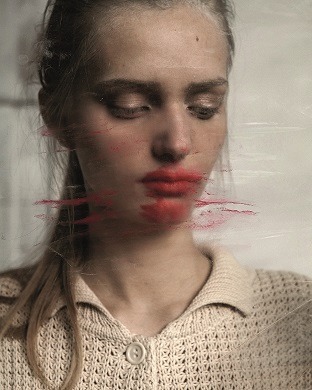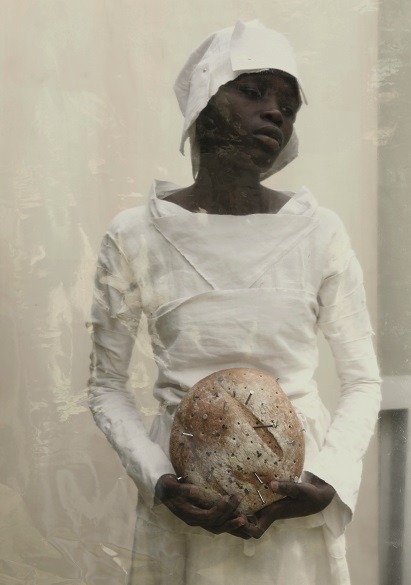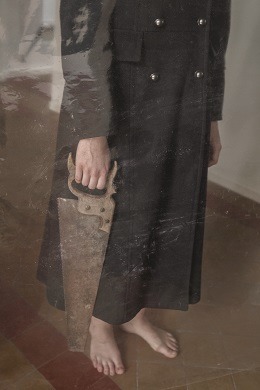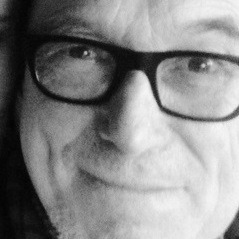"I usually don't photograph what I see but rather what my mind reflects." Karel Fonteyne is a Belgian photographer based in Brussels. Since the 70’s, he has built a very personal body of work using primarily analog black-white work. His career spans almost 45 years of photographic work and includes many vintage prints published in small editions.
Unlike most photographers, Karel does not take pictures from the outside world. His photographs are extremely intricate and nothing is what it seems at first. He composes and translates his thoughts and feelings into very personal images. In order to achieve this, he identifies elements which at first sight have nothing in common. Thanks to the “painturesque” style and language, the images tell stories, and they do so quietly. And although they are very present, they force the spectator into silence.
It makes the woman mysterious, recessed in their own world. They all appear to partly conceal themselves, each one in their own way, in order to divert attention to something else. It is like the silence before the storm. At first glance they look beautiful and strong, but soon you feel the vulnerable, sensitive undertone.

Without words
Nails in a loaf of bread, a saw or smeared lipstick makes all this painfully obvious. In addition, the characters seem to be alone in the world, making them more strongly connected with “a bigger whole”. Karel’s images thereby take us out of our comfort zone and force us to reflect whether we like it or not.

The 7th bread ended up in London
‘Tales of Silence’ is Karel’s first project in full colour. It contains very “earthy” colours using shades of brown, grey and green – every time applied in a specific atmosphere or setting. The intricacy, use of colors and subjects - one could almost call Fonteyne a “painting photographer”.
The Brussels Times met with Karel to learn more about how and why he became a photographer, his sources of inspiration and his thoughts on his latest collection of work, ‘Tales of Silence’.
Karel is represented by the Ingrid Deus Gallery in Antwerp, Young Gallery in Brussels and by Gallery De Buck in Ghent. To find out more, please visit www.karelfonteyne.com
Q. Where do you draw your inspiration from?
A. My childhood influenced me a lot. My brothers and sister were much older than me so I played alone a lot. We lived in the country side, and I loved to wander around in the woods. I remember how the sounds and smells brought up unknown feelings that are difficult to describe. It’s there that the source of my work essentially lies. Later on all the pieces of the puzzle fell into place and I realized that there was an “in-between world” that I felt attracted to.
I began to photograph after seeing the movie "Fuglane" (or "The Birds") by Norwegian director Terjei Vesaas. I was very impressed by the dramatic black and white images. There were few dialogues but above the silence and sudden noises of nature, dialogue was created.
The same happened when I started to read the books by South American writer Borges and watch the movies of Bergman. I recognized myself in what they expressed: they felt like similar souls. Now I realize that silence is always an underlay in my work.
I remember as a kid standing behind the window, with my forehead touching the cold glass and observing the outside world. It had been snowing heavily. A neighbor and the postman came in opposite direction and crossed each other with much difficulty. There was no sound but I could “feel” the sound.
I don't have the urge to take pictures of what's interesting or beautiful around me. I just enjoy the pleasure of the moment. The impressions of what's going on around me feed me subconsciously and it's the combination of impressions that triggers an idea.
I make quick drawings when I have an idea. I then search for the elements that will complete the process. I don’t present what I see physically see but rather aim to depict the reflection of what my mind sees. The process goes from idea -> elements -> mise en scene.
Q. For almost 40 years you have taken pictures in black and white. For the first time, your latest work “Tales of Silence” is in color. What made you change?
A. When you add colours to my black and white photos, they have the same feeling as “Tales of Silence”, and if you take out the colours from “Tales of Silence”, they have the same emotion as my black and white work. I was inspired by a small portrait painting of a family member. For years it was just standing there and I never really paid any attention to it. But it ended up becoming the start for my color pallet for “Tales of Silence”. The dusty feeling looked right. It took me quite a while to find a way to make a photo with the ingredients of a painting.

Ten Toes
Most of the painters nowadays use a photo as the base for their work. They can change it in any way they want. But I had to do it directly. The preparation was primordial - the right objects, place, colors and feelings. I also had to create a depth that you don't have in a photo since it is mostly flat.
In the end, I found ways to create this depth. My previous experience with film also helped. Before you pushed the button, everything had to be perfect just as you had it in your mind. You couldn’t retouch it once it was shot.
Q. How do you manage to charge your pictures with so much emotion and with so many multiple narratives intertwined?
A. I just follow my intuition. It’s a kind of story telling which I direct and oversee. I have to guide the people I work with a bit, but usually everything just falls into place naturally. They unconsciously “get the message” slowly but surely.
This is also why I don’t like to work with professional models. There is a certain naivity which comes with models who don’t have previous experience, and when they eventually get comfortable, they just go with the flow of the story. Professional models will usually have preconceived notions of how they should act, or how they think we, the photographer would like them to act, and this sometimes interferes with the fluidity and innocence which I think is very beautiful.
Frozen Flower
Sometimes I also add plays of words into my work, which gives a wink to the story. It makes things mysterious and gets the viewer to think about the work.
Q. Can you tell us a bit about your next projects?
It’s the continuation of Tales...there are lots of Tales to tell.

